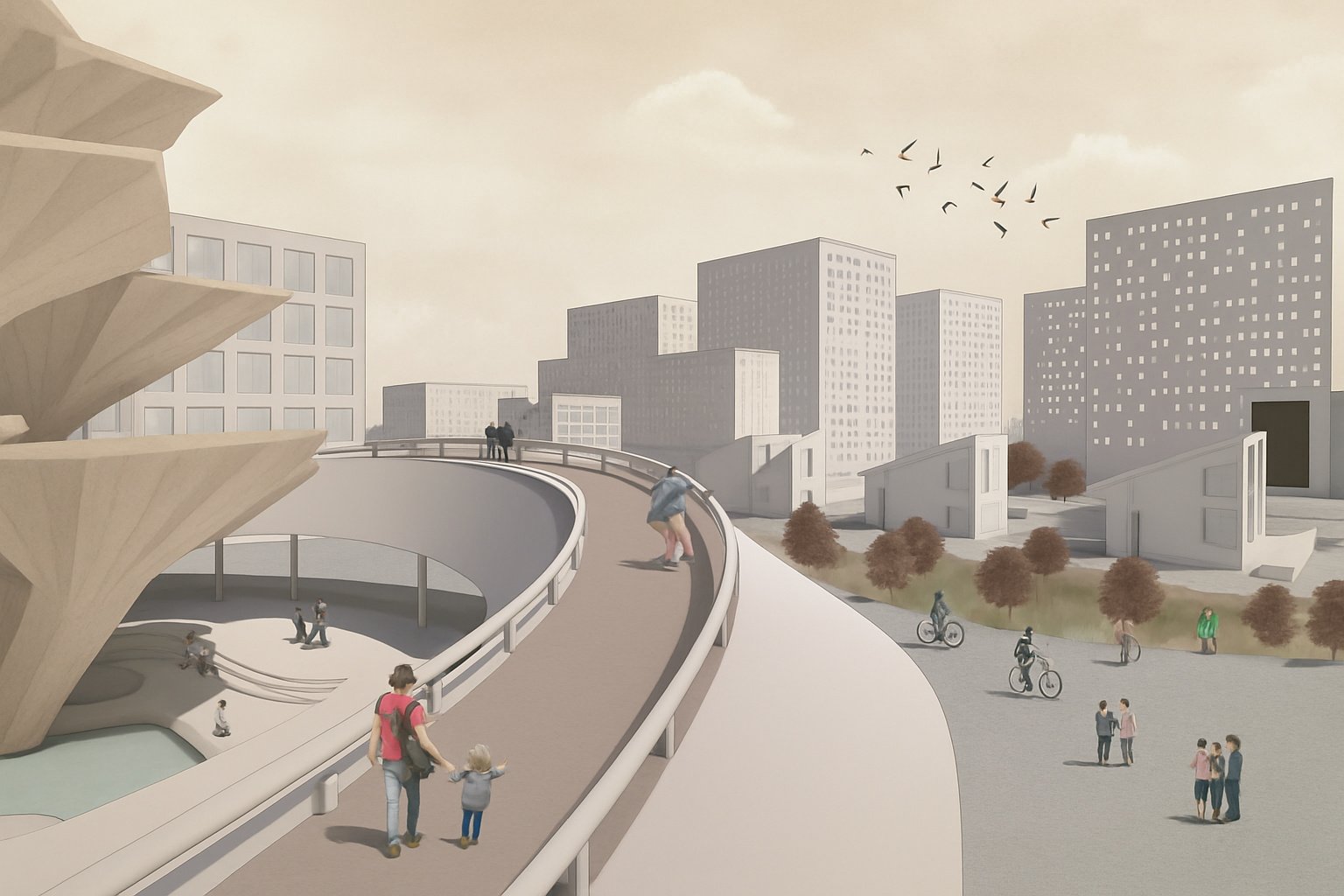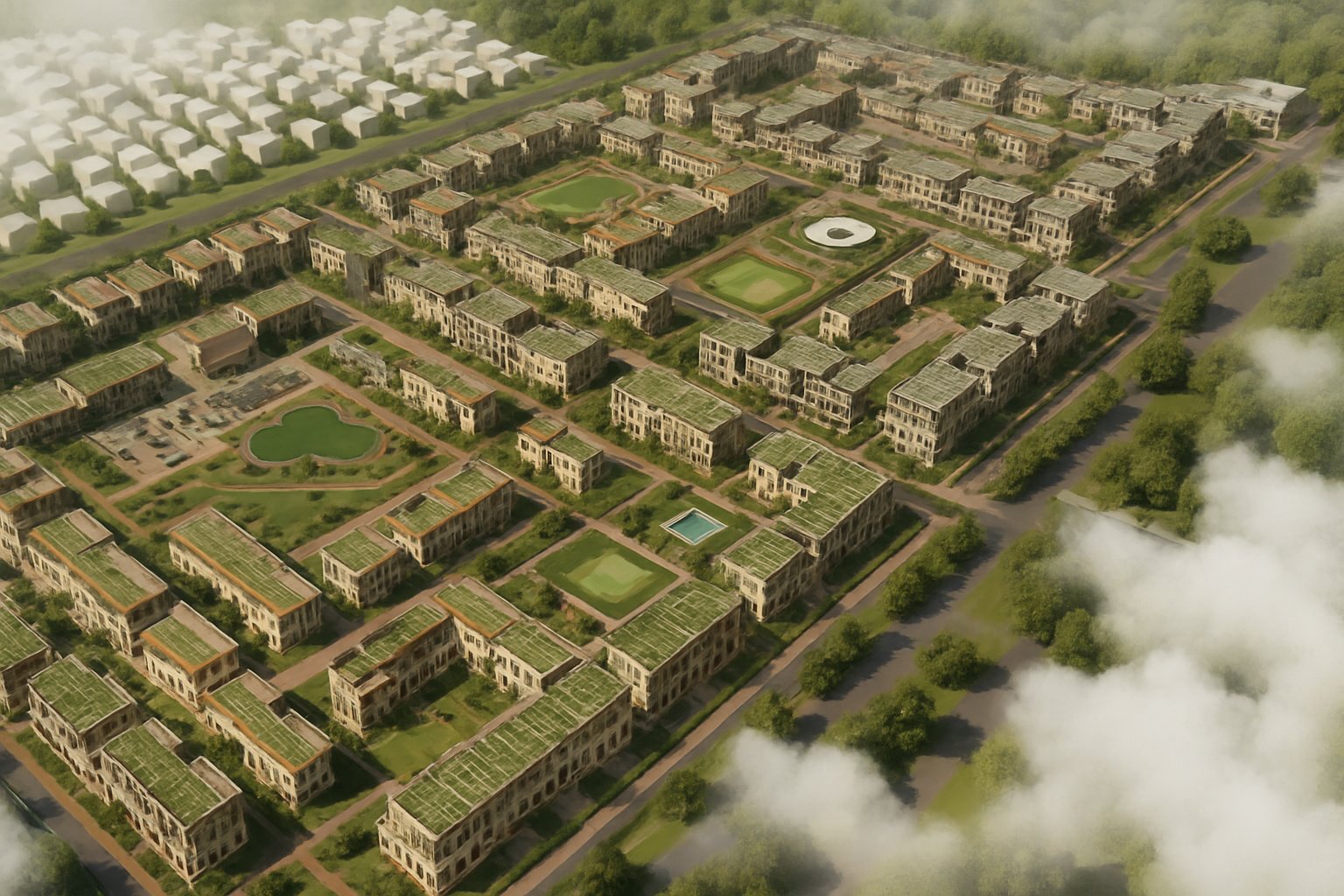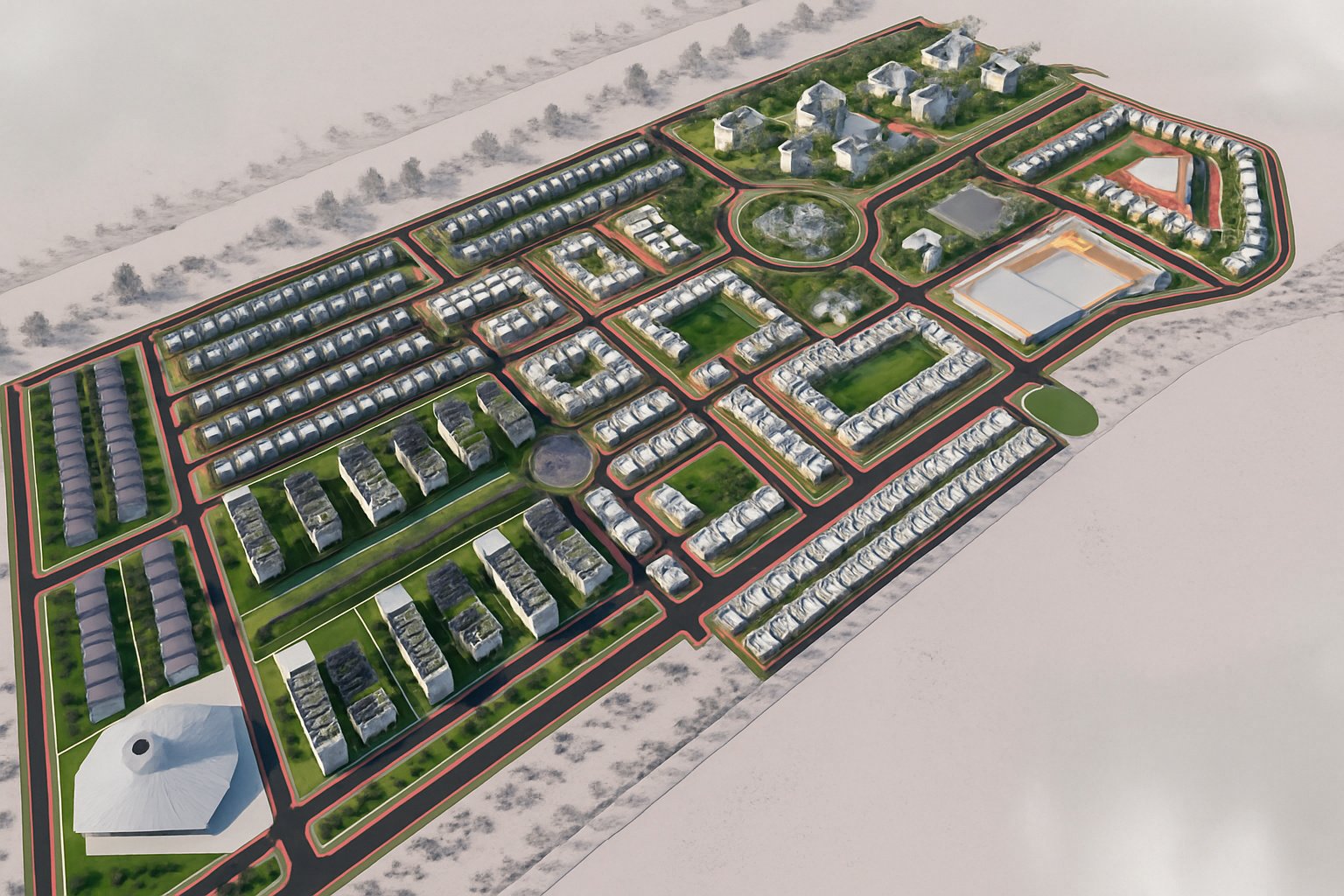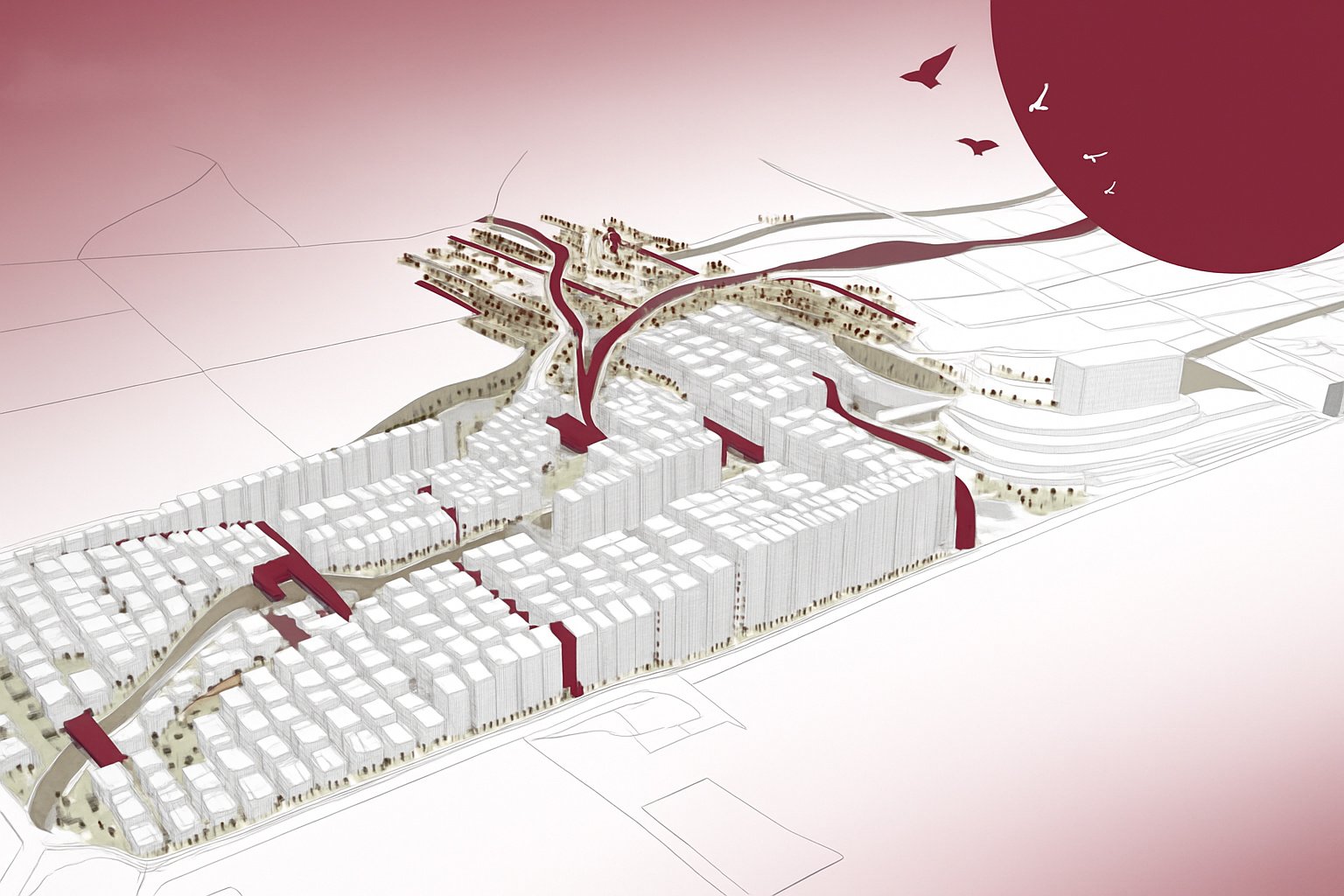
A proposal for a series of micro-villages that prioritize sustainable lifestyles is among the projects from students at the American University in Dubai.
Also featured is an urban layout that rethinks Dubai’s street system to follow its natural cracks and a proposal that reimagines Abu Dhabi’s superblocks.
Weavers-dale

Bangladesh garment factory workers—the silent builders of the country’s prosperity—suffer harsh realities in densely populated, unsafe slums along the Dhaka-Chittagong highway.
Behind each piece of cloth is a story of survival amidst poor housing, pollution, and infrastructure. This project began with 122 questionnaires, six interviews, and photogrammetry to understand workers’ demands.
It envisions upgrading informal settlements to decongest and improve livability. Weaversdale, 1st-place winner of the 2025 MUDDE Senior Showcase, envisions an independent artisan community with vocational courtyards for home-based manufacturing.
It draws from rhizomatic urbanism to embrace flexibility and modular infrastructure, making these settlements hubs of dynamic cultural and economic innovation.
Micro-housing

This proposal outlines a sustainable urban development bridging the gap between work and living spaces through three themed micro-villages: sports, farming, and crafts.
Each village promotes a self-sufficient lifestyle, enabling residents to live, work, and socialise locally.
The master plan integrates residential, commercial, and public spaces to enhance accessibility and reduce external disturbances.
Environmental features like open spaces, water bodies, and a pedestrian-friendly transport network support ecological balance.
Rooted in mixed-use and community-oriented design, the project reflects Dubai’s vision for inclusive, vibrant, and liveable neighbourhoods, serving as a model for future urban growth.
Living Loop

Urban life is reinvented in Living Loop as regenerative life with sustainability at the center.
Built around four elemental parks (sand, water, green, and mat), the district is in the shape of an unbroken loop supporting ecology and community life.
A central sanctuary invites active engagement in the shape of butterfly gardens, bee zones, yoga lawns, and edible landscapes to support food resilience and ecological stewardship.
By integrating wellness and urban agriculture into everyday life, Living Loop promotes robust interactions between community and nature.
It is more than a master plan; instead, it’s a vision for low-impact, self-sustaining urbanism based upon environmental sensitivity, social well-being, and syncopated harmony with natural rhythms.
Dubai’s Next Dimension

« Dubai’s urban form is fragmented, a condition fueled by rapid urbanization and population growth. ».
« TODx proposes the building of a central anchor point, a ‘Transit-Oriented Development’ (TOD), as a catalyst to reunite the disconnected urban landscape of the city. »
« TODx applies basic TOD concepts and redefines them within the ‘5D city’ paradigm, focusing on connectivity by uniting movement, space, and time among vertical, horizontal, and multidimensional dimensions to make walking mobility irresticible. ».
This visionary design stacks relationships on top of one another, so no matter what level you are on, it is like being at street level.
American University in Dubai includes Projects Like Sustainable Micro-Villages
Student Projects at American University in Dubai Explore Sustainable Micro-Villages and Urban Futures
Some of the best student projects from the American University in Dubai (AUD) include a futuristic micro-village concept that encourages sustainable living. Other top proposals include an redesigned street network for Dubai based on its natural features and a redesigned Abu Dhabi superblocks.
In response to Dubai’s fragmented urban landscape caused by rapid sprawl and growth, this project, TODx, introduces a central Transit-Oriented Development (TOD) as a unifying anchor for the city.
On the TOD principles reimagined in a « 5D city » context, the concept layers movement, space, and time along higher-dimensional axes—offering continuous pedestrian access along vertical as well as horizontal planes. It reconstitutes connectivity so that each level of the city experience is an extension of the ground plane and offers a single strategy for future city integration.

